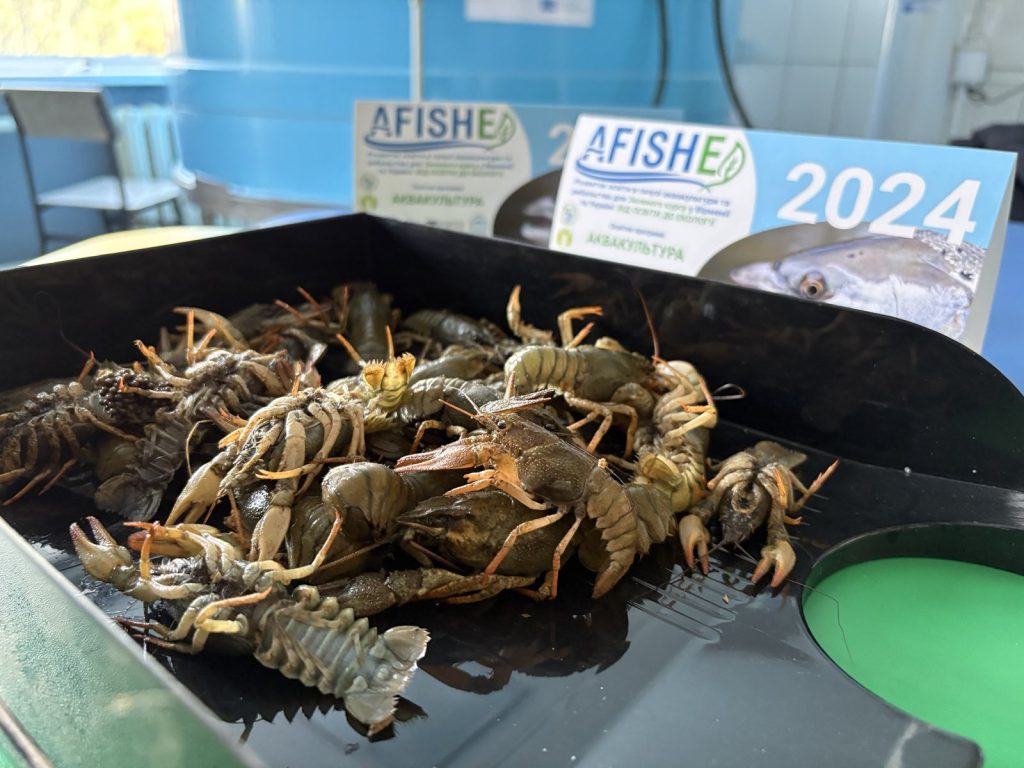Recently, the process of cultivating the freshwater crayfish (Astacus astacus) was launched within the teaching and practical aquaculture laboratory. The project is aimed at investigating the peculiarities of rearing this species under controlled conditions, developing effective maintenance technologies, and refining methodologies for population reproduction.
Funded by the international AFISHE Erasmus+ project, the aquaculture laboratory was established to study the rearing conditions for freshwater fish and crustaceans. Its advanced equipment allows for comprehensive research into aquatic environmental parameters, feeding regimes, and breeding techniques for aquatic biotic resources.
Distinctive Aspects of Freshwater Crayfish Cultivation
The freshwater crayfish requires clean, well-oxygenated water and specially designed hiding places. In the laboratory, optimal conditions have been established, including:
- Controlled Aeration: A regulated aeration system maintains the requisite oxygen levels.
- Specialised Tanks: Pools with multi-level bottoms and shelters are provided to ensure comfortable moulting.
- Temperature Regulation: Water temperature is maintained between 18–22°C to support active growth.
- Balanced Diet: A diet incorporating both protein and plant components is offered.
Objectives of the Cultivation Project
- Research: To study the impact of various factors on crayfish growth and development.
- Optimisation: To refine feeding and maintenance protocols.
- Breeding Techniques: To perfect artificial breeding methods for future application in natural water bodies and aquafarms.
- Educational Training: To provide practical training in modern aquaculture technologies for students.
This project not only offers the students a unique, hands-on experience with freshwater crustaceans but also contributes to the advancement of sustainable aquaculture technologies in Ukraine.


